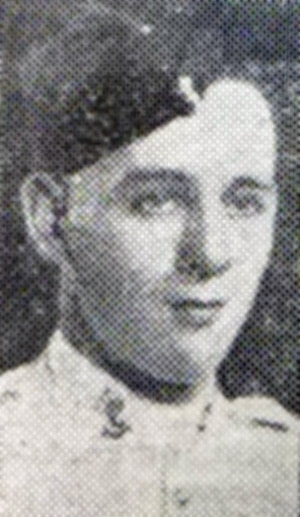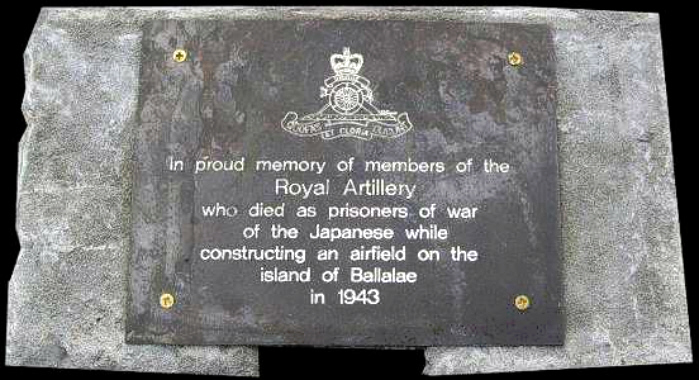
Joseph Reynolds was born in Gawthorpe, Ossett in Summer 1920, the son of John James Reynolds and his wife Lydia (nee Lumb), who had married at Gawthorpe and Chickenley Heath Parish Church on 4th March 1911.
The couple had nine children: Jane (aka Ginny, born 1911), Annie (1913), Joseph (1920), Alfred (1921), Walter (1924), Leslie (1925), Betty (1928) and twins Fred and Jack (1930). Sadly their mother, Lydia, died in late 1932 aged just 44 years, leaving John James a widower with seven of his children not yet in their teenage years.
Widower John James Reynolds married Edith Gibson in 1944, but sadly she died, aged 50 years, in late 1950. Two times widowed, John James married Alice Ward in late 1957.
In September 1939 John James was living at 77 Swithenbank Avenue with six others; the only name not redacted was his son, Fred, a twin. The remaining five redacted names would most likely be his children, Walter, Leslie, Betty, twin Jack and either Ginny or Annie. It is understood that in addition to Joseph, his brother Alfred, was also serving by this time. His brothers, Walter and Leslie, subsequently served in WWII.
John J Reynolds of 5 Jubbs Terrace was buried at Holy Trinity Church on 16 October 1962.
John James’s eldest son, Joseph Reynolds, joined the Royal Artillery as a regular soldier in 1937 and was sent to Singapore in 1938 as part of the defending garrison troops. After the fall of Singapore to the invading Japanese on the 15th February 1942, Gunner Reynolds was taken prisoner of war.
In 1943, he was to die at the hands of the Japanese in 1943 in barbaric circumstances on the island of Balalae, in the Shortland Islands Group in the Western Province of the Solomon Islands. His parents back home in Ossett clung on to the hope that he was still alive as a Japanese POW until June 1946, when they finally received the letter from the War Office that they had been dreading.
In October 1942 600 British POWs in Singapore, with their commander Lieutenant Colonel John Bassett, were loaded on to a ship which they were told would transport them to a prison camp in Japan. Instead they headed south of the equator, stopping in Surabaya in Indonesia and continuing to Rabaul on the island of New Britain in Papua New Guinea. In November 1942, the 517 fittest men were shipped out of Rabaul and taken to Balalae where they arrived in late November and were set to work to build the runway still in use today.
Many of the prisoners died from overwork, exhaustion and tropical diseases, but a great number were killed by allied air raids on the island. A B24 raid on the night of 12-13 March 1943 may have killed as many as 300 of the prisoners of war when three bombs landed on their encampment. In late June 1945 another heavy air raid followed by shelling from US navy ships convinced the Japanese that the island was about to be invaded and they decided to execute all the surviving prisoners. On 30 June 1943 the survivors, perhaps 70 to 100 men, were all bayoneted or beheaded.
After the war ended a mass grave was discovered by Australian investigators and the remains of over 400 men were removed in November-December 1945 and are now buried at the Bomana Commonwealth War Cemetery in Port Moresby. Over 100 Japanese servicemen on the island who were interviewed about events on the island denied any knowledge of the executions. For many years British Ministry of Defence records insisted that the 517 men shipped out of Rabaul had died when their ship was sunk.1
In fact Chinese prisoners and two Koreans working on the island had reported the massacre and in 1946 Norihiko Ozaki, one of the island commanders, made a confession. No war crime convictions for the events on Balalae were ever made.
In August 2020, Mrs Irene Turnbull, the daughter of Joseph Reynold’s younger brother Alfred contacted us via “The Ossett Fallen” Facebook Group with some additional information about the death of her uncle:
“Alfred Reynolds that you mentioned in your article was my father born in 1922. Like so many veterans he never spoke about the war to myself or my brothers or sister. It was in fact my mother who once told me that my father had discovered that his brother brother Uncle Joe was executed whilst trying to escape from the island by canoe, whatever circumstances in which the Japanese ended his life and that of the 516 other servicemen was barbaric. The only time I ever heard my father express any feelings towards the Japanese was when he worked as a chauffeur in one of the local businesses and refused to collect the Japanese business men from the airport, I was 16 at the time and never forgot as it was very rare we ever heard my father swear, that is when I questioned my mother. The manner of Uncle Joes death is of course not officially on record.”
The “Ossett Observer” had this obituary for Joseph Reynolds:2
“Now Presumed Dead – Gawthorpe Family’s Loss – Mr. and Mrs. J.J. Reynolds of 77, Swithenbank Avenue, Gawthorpe were notified by the War Office that their son Gunner Joseph Reynolds was reported “missing, believed prisoner of war” after the fall of Singapore in February 1942. Mr. and Mrs. Reynolds have now been informed that it is believed that their son was amongst a number of PoWs who were aboard a Japanese transport bound for the Solomon Islands. The ship was sunk, and for some time nothing was known of the fate of the men aboard her. Recently, however, an unmarked grave has been found on one of the Solomons containing the bodies of a number of Royal Artillerymen, one of which is believed to have been Joseph Reynolds.
Gunner Reynolds, who was 23 at the time of his capture, was educated at Gawthorpe Council School, and was later employed by Doric Ltd., Gawthorpe. He joined the regular army in 1937 and went to Singapore with his heavy artillery unit in 1938 to take up the role of garrison troops. He never returned to England, and his last letter to his parents was written in November 1941. Three of his brothers are still serving with the Army.”
Gunner Reynolds is reported to have died on the 5th March 1943, aged 22 years and he is buried in an unmarked grave on Balalae Island, part of the Solomon Island Group in the Pacific. He is also remembered on Column 28 of the Singapore Memorial.3
Within Kranji War Cemetery stands the Singapore Memorial, bearing the names of over 24,000 casualties of the Commonwealth land and air forces who have no known grave. Many of these have no known date of death and are accorded within our records the date or period from when they were known to be missing or captured. The land forces commemorated by the memorial died during the campaigns in Malaya and Indonesia or in subsequent captivity, many of them during the construction of the Burma-Thailand railway, or at sea while being transported into imprisonment elsewhere. The memorial also commemorates airmen who died during operations over the whole of southern and eastern Asia and the surrounding seas and oceans.

Joseph Reynolds (1920-1943) was the eldest son of John James Reynolds and was named after his uncle, Joseph Reynolds (1892-1915) who served in WWI and died from gas poisoning on 19th December 1915. The father of the Joseph born in 1892 was called Anthony Reynolds and he too was a soldier who lost his life in service to his country. He died of enteric fever, typhoid, at Springfontein, Pretoria on May 7th 1901 and was posthumously awarded the Queen’s South Africa Medal for his sacrifice in the Second Boer War.
In a period of 42 years, men from three generations of the Reynolds family, a father, a son and a grandson, were lost in war. Only one member of this Reynolds family lived to know each of these three brave men. His name was John James Reynolds, who himself served in WW1 and survived.
Joseph Reynolds (1892-1915) and his nephew Joseph Reynolds (1920-1943), both aged 23 years, are remembered by their names at the War Memorial in Ossett Market Place.
References:
1. The Sad Story of Balalae Island by Tony Wheeler
2. “Ossett Observer”, Saturday, 15th June 1946.